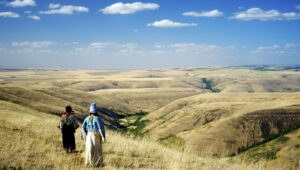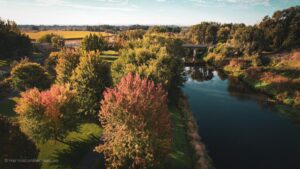5 Facts About the Mountain Time Zone

5 Facts About the Mountain Time Zone
The Mountain Time Zone, an enchanting realm where rugged landscapes meet vibrant cultures, stretches across the heart of the United States. Whether you’re scaling a peak in Colorado or sipping coffee while watching the sunrise over Utah’s canyons, this time zone offers a unique blend of adventure and tranquility. But there’s more to it than just breathtaking views and outdoor escapades. From its historical roots to its quirky trivia, understanding the Mountain Time Zone is essential for anyone looking to explore this stunning region. Join us as we unravel five fascinating facts that highlight what makes the Mountain Time Zone so special!
History and Origin of the Mountain Time Zone
The Mountain Time Zone was established in 1883 during the creation of standardized time. Before this, local solar time dictated schedules, leading to confusion across the growing United States.
As railroads expanded rapidly, a unified system became essential. The American Railway Association proposed four distinct time zones: Eastern, Central, Mountain, and Pacific. This proposal aimed to streamline train schedules and improve travel efficiency.
Mountain Standard Time (MST) is seven hours behind Coordinated Universal Time (UTC-7). During daylight saving time, it shifts to UTC-6.
The introduction of MST allowed western territories to align with their neighbors while embracing their unique cultural identities. Today’s Mountain Time Zone spans not just states but also shares borders with other regions that have influenced its history and development over the years.
Geographical Coverage and Observing States
The Mountain Time Zone, often abbreviated as MT, spans a significant portion of the western United States. It covers states like Colorado, Utah, New Mexico, and Wyoming.
This zone also includes parts of Idaho and Montana. The landscape ranges from majestic mountains to vast deserts that define this region’s unique character.
In addition to these core states, some areas in Canada observe Mountain Time as well. Alberta and parts of British Columbia fall into this category.
Interestingly, certain regions within other states may also adopt Mountain Time temporarily or permanently due to local preferences or economic considerations. This flexibility showcases the adaptability of timekeeping practices across different communities.
Whether you’re hiking in the Rockies or exploring vibrant cities like Denver and Salt Lake City, understanding the geographical nuances can enhance your experience in the Mountain Time Zone.
Unique Characteristics of the Mountain Time Zone
The Mountain Time Zone is distinguished by its breathtaking landscapes and vibrant outdoor culture. Stretching through majestic mountains, it offers stunning views that change with the seasons.
This time zone operates at UTC-7 during standard time, which shifts to UTC-6 in daylight saving time. This adjustment allows for longer evenings perfect for hiking or stargazing.
Notably, the Mountain Time Zone encompasses a mix of urban centers and vast wilderness areas. Cities like Denver provide modern amenities alongside proximity to nature’s playgrounds.
Additionally, this region is known for its unique cultural blend, influenced by Native American heritage and Western traditions. Festivals celebrating art, music, and food are common throughout the year.
Residents enjoy an active lifestyle thanks to the abundance of recreational opportunities available in both summer and winter months—from skiing to rock climbing—making life here truly special.
Fun Facts and Trivia about the Mountain Time Zone
The Mountain Time Zone is home to some incredible quirks and trivia. Did you know it’s the only time zone in the U.
S. that spans both Canada and Mexico? This makes it a fascinating point of connection for North America.
Another fun fact: during Daylight Saving Time, the Mountain Time Zone shifts from UTC-7 to UTC-6. But not all places observe this change; parts of Arizona choose to remain on standard time year-round!
Ski lovers rejoice! The zone features famous ski resorts like Aspen and Vail, attracting enthusiasts from around the globe.
Wildlife thrives here too. The Rocky Mountains provide habitat for diverse species, including bighorn sheep and mountain goats.
Local festivals often celebrate unique cultural heritages—think Native American powwows or cowboy gatherings showcasing Western traditions!
Adjusting to Life in the Mountain Time Zone
Adjusting to life in the Mountain Time Zone can be a refreshing experience. The stunning landscapes and outdoor activities make it enticing for newcomers.
For those migrating here, acclimatizing to the elevation is key. Whether you’re hiking or simply exploring, taking time to adjust helps reduce fatigue and altitude sickness.
Cultural shifts are also noticeable. Local events often revolve around mountain sports and festivals celebrating nature. Community engagement is vibrant, making it easy to meet new friends.
When it comes to daily routines, remember that sunrise happens earlier than expected during summer months. This shift can alter your schedule but offers more daylight for adventures after work.
Embracing local cuisine is part of the adjustment too! From hearty stews to fresh trout dishes, savoring regional flavors enriches your Mountain Time experience.
Conclusion
The Mountain Time Zone is a unique and captivating part of the United States. It offers more than just breathtaking landscapes; it also has a rich history and distinct characteristics that set it apart from its neighboring time zones. From its origins rooted in the need for standardized timekeeping to its geographical diversity, this zone has much to explore.
Living within the Mountain Time Zone means embracing a lifestyle influenced by nature’s rhythms. Whether you’re navigating daily routines or planning adventures across stunning terrains, understanding this zone can enhance your experience.
With intriguing facts and practical insights about adjusting to life here, anyone can appreciate what makes the Mountain Time Zone special. So whether you’re visiting or settling down, there’s always something new to discover in this remarkable area of America.








